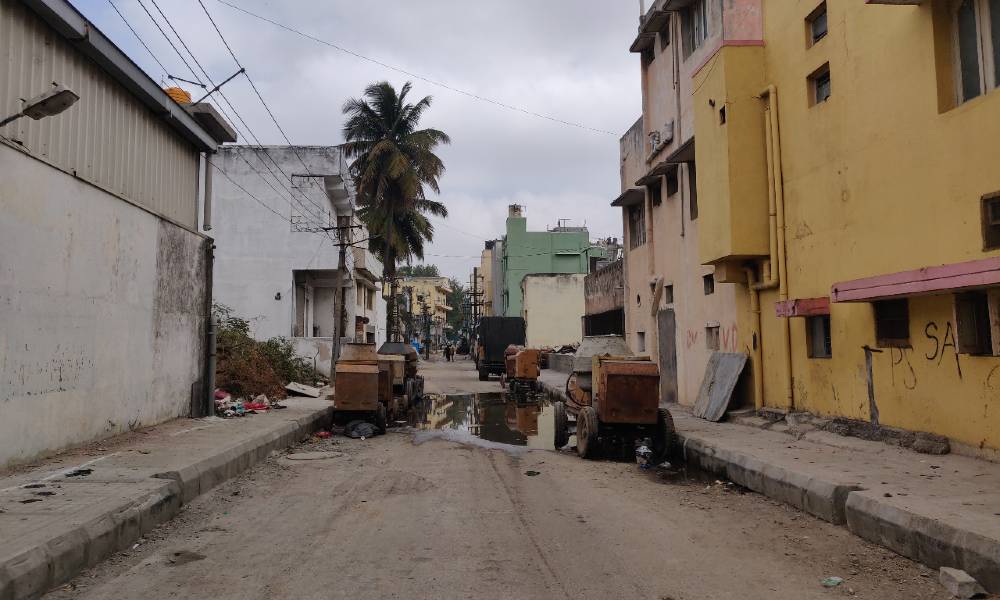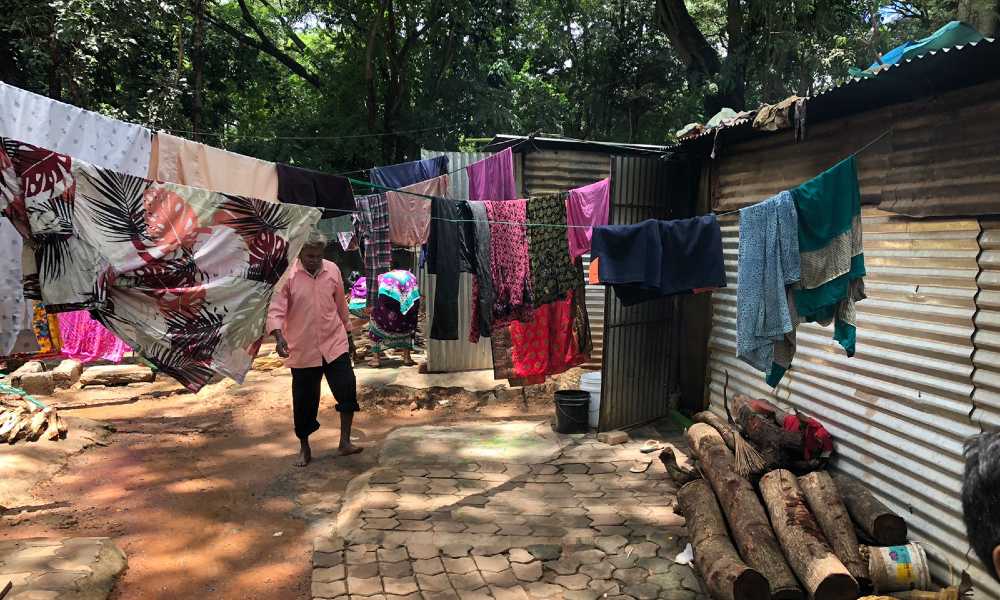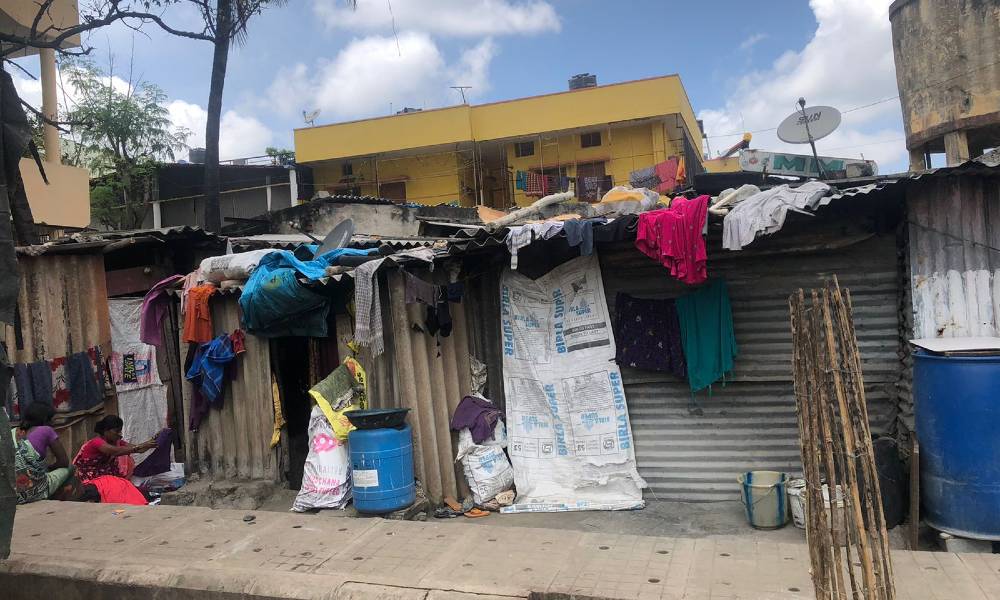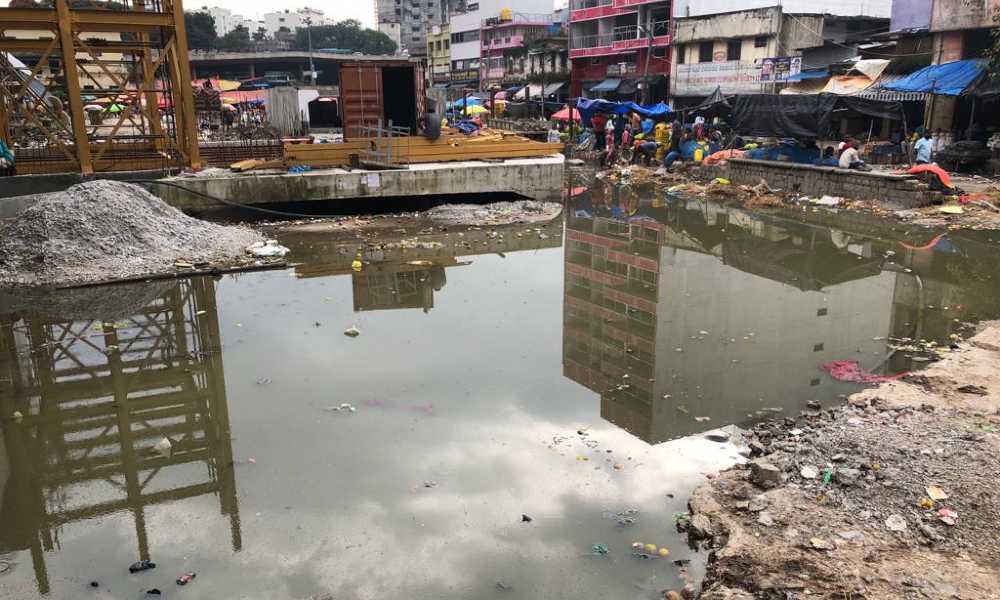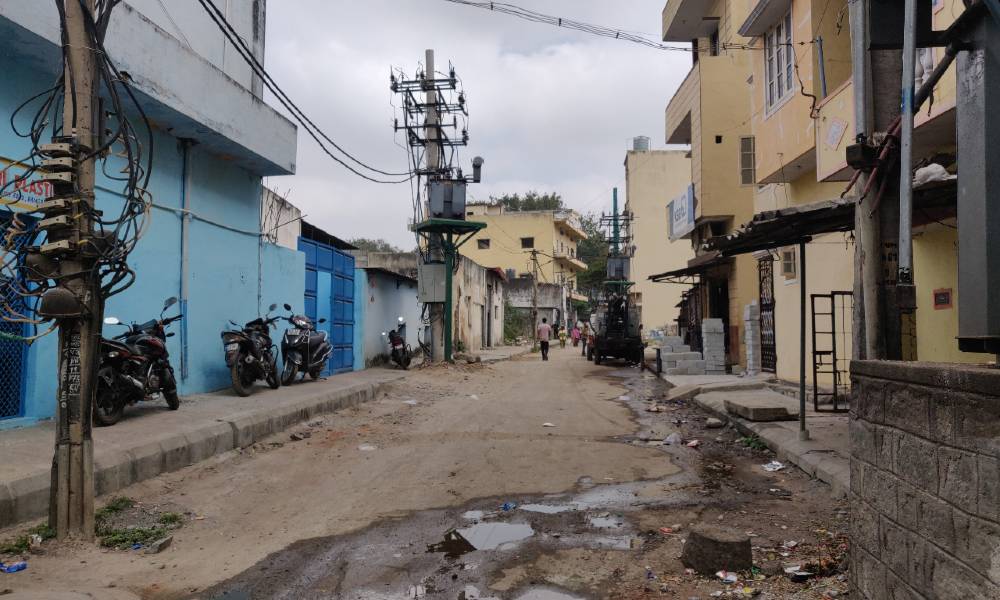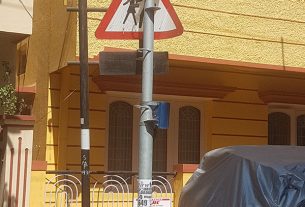The number of slums in Bengaluru are rising despite the implementation of multiple housing schemes.
The Kannada music reaches you first, playing on the speaker next to a line of small kirana shops. You see the children playing and dancing to the beats.Then you notice the shabbily dressed young men sitting in a circle, smoking and spitting pan on the side of the cow-dung filled road. The ladies stand in front of the shops chatting. Chatting about their day at work, working odd jobs as coolies, house-maids, and cooks. Sharada calls this home, an urban slum in Nayandahalli with over 5000 houses.
The Karnataka Slum Development Board’s annual report shows that Bengaluru Urban currently has 435 notified slums while Bengaluru Rural has 33. Karnataka’s total slum count is 2705 with 7,46,206 households living in slums. Karnataka has 73 new slums. Most of them are in Bengaluru. An official at the Slum Board said, “Only Bengaluru has an increase in slums. Most other districts do not see any change in numbers. People in other districts continue to live in those slums or sometimes move to the ones in Bengaluru in search of jobs.”
Sharada has lived in the slum for almost 50 years now. She remembers when the slum had barely 60 people living on the land in their small huts. “So many families live here now. In the last 10-15 years we have had more than 700 people coming from so many different areas and cities,” she said. Sharada added that ten years ago the government built them ‘pucca’ houses. The houses have a single bedroom, a hall, and a kitchen. The building has over 5000 houses. Each home houses 10 to 12 people. “That is a lot of people living in a house but it is common for us and we are used to it,” Sharada added.
The Karnataka Slum Development Board has constructed 1,26,243 houses so far. The Board has three housing schemes— Rajiv Gandhi Awas Yojana (RAY), Pradhan Mantri Awas Yojana (PMAY), and the Jawaharlal Nehru National Urban Renewal Mission (JnNURM)—Once the housing scheme is implemented by the Board, the completed projects are handed over to the Bruhat Bangalore Mahangara Pallike (BBMP).
Suresha, a sociology professor, said that the free housing plots given by the slum board, Bangalore Development Authority (BDA), and BBMP lack basic facilities like water, electricity, and sanitation.
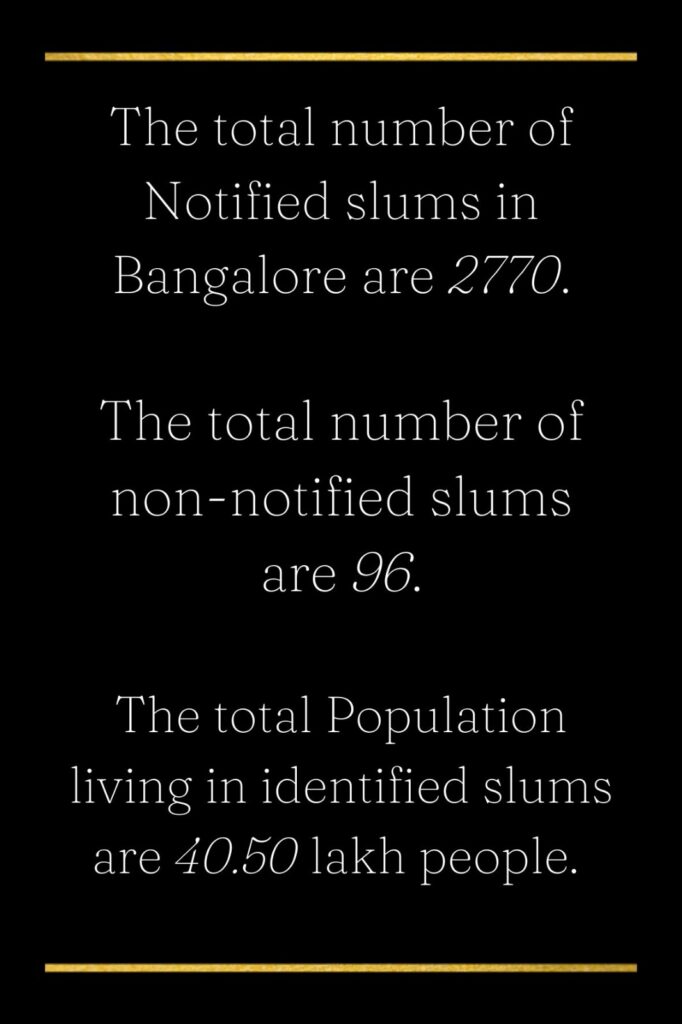
Officials from the Karnataka Slum Development Board said that migration and overpopulation are the reasons for the increase in the number of slums. They added that the population is growing faster than they can provide housing opportunities. An official from the Board’s City Level Technical Cell said, “Bengaluru has many job opportunities and people migrate here to avail them. That is a lot of poor people migrating here who settle in slums.”
An urban planner agrees that Bengaluru is overpopulated. He added that the population is only growing. The urbanisation and migration is adding to the increase in the number of slums.
Officials from the Slum Board said that the Ambedkar Slum in Shantinagar is Bengaluru’s most populated slum followed by the one in Nayandahalli, Panthrapalya.
Almost 19 percent of Karnataka’s total urban population lives in slums. Bengaluru Urban has 25,857 sanctioned houses under the PMAY scheme and Bengaluru rural has 1417 houses that have been sanctioned this year. Officials and residents say that the construction of these projects usually takes a year or two.
Venkat Raman Iyer, managing trustee of Swabhimann Trust, a non-profit organisation said that the population in the slums that he worked with is clearly increasing. He added that the reason for it was migration of people looking for jobs. “The local slums do not have local people but it has people from North East, Bihar, Jharkhand, and West Bengal. In the last two years because of the lockdown these migrants went back home and now they are back with more people looking for fresh job opportunities after the pandemic.” Iyer said.
Iyer said that providing good employment, education for children and health facilities are the long-term solution for reducing the number of slums in the city. “One way to ensure that the poor get employment is the MGNREGA scheme which should work efficiently.”
He also predicted that it will get worse in the next five years as there is huge unemployment, inflation, high cost of living in the city making the situation worst.


